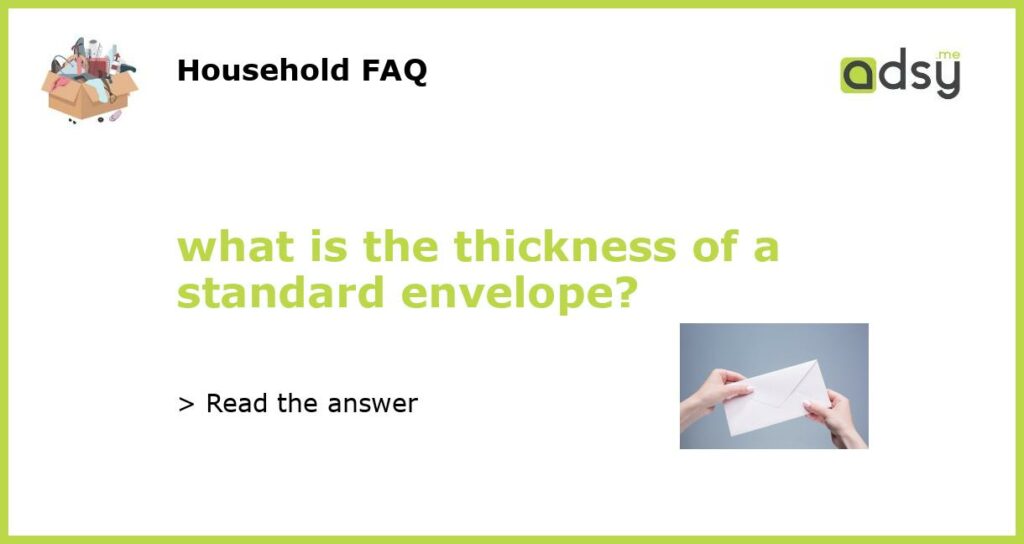The Standard Envelope Thickness: What You Should Know
Envelopes are an essential item for businesses and individuals alike. However, not many people know the standard thickness of an envelope. In this article, we will delve into the details of envelope thickness and why it’s important to know.
What is the Standard Envelope Thickness?
The standard thickness of a regular envelope is 0.1 inches or 2.54 mm. This type of envelope is commonly used for sending letters or documents via mail. The thickness of envelopes can vary depending on their intended use. For example, a thicker envelope is required for bulky items such as brochures or catalogues.
Why is Knowing Envelope Thickness Important?
Knowing the thickness of an envelope is essential for two reasons:
- Postage Costs: Different postage costs are associated with different envelope thicknesses. Envelopes that exceed the standard thickness might incur extra postage fees, which could be an unnecessary expense.
- Protection of Contents: Envelopes that are too thin might not provide adequate protection for their contents during transit. On the other hand, envelopes that are too thick can be unnecessarily bulky and, therefore, an inconvenience to handle.
What are the Different Types of Envelopes?
Envelopes come in various sizes, colors, and materials to suit different needs. Some of the most common types of envelopes include:
- Regular Envelopes: These are the most basic and commonly used envelopes. They come in different sizes and are typically used for sending letters or documents via mail.
- Window Envelopes: These have a clear window that allows the address to show through. They are commonly used for invoices, bills, and other business correspondence.
- Cushioned Envelopes: These have padded lining to provide extra protection for sensitive items such as books, CDs, or DVDs.
- Specialty Envelopes: These envelopes come in various sizes, colors, and materials and can be customized to suit specific needs. Examples include invitation envelopes, announcement envelopes, and marketing envelopes.
Knowing the thickness of a standard envelope is important for anyone who uses or plans to use envelopes for sending mail or protecting documents. Envelopes come in various sizes, colors, and materials to suit different needs, and choosing the right one can make a big difference in terms of postage costs and protecting the contents. Therefore, it’s essential to be aware of the range of options and make an informed decision when selecting an envelope.






